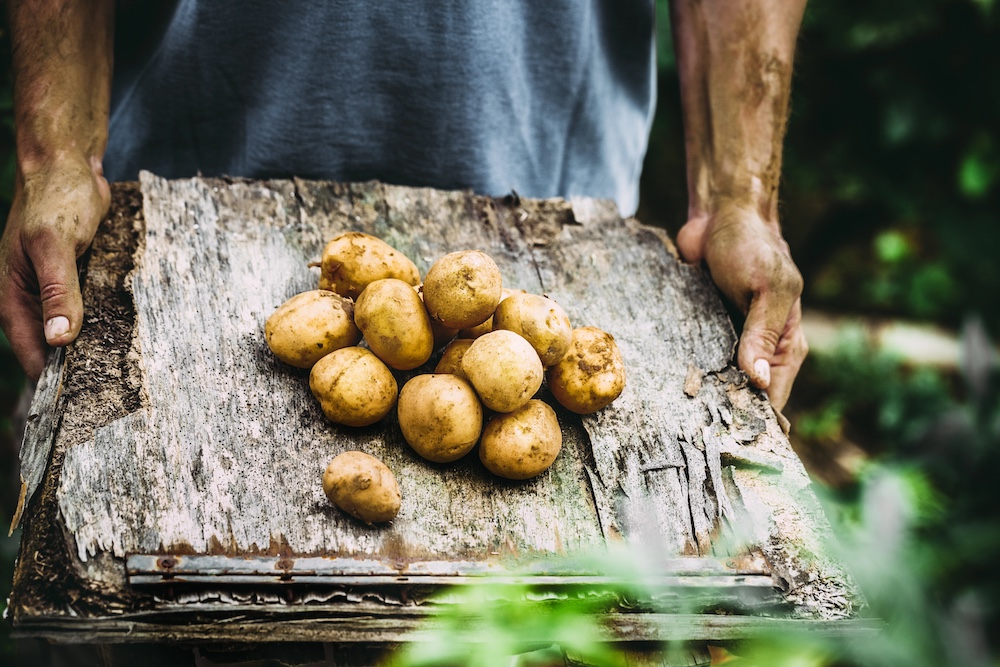 🖨️ Print post
🖨️ Print post
This recipe comes from the article published in our Wise Traditions journal Toxic Taters: Practical Lessons From Traditional Potato Processing by Dr. Bill Schindler. Due to the toxins in potatoes, Bill recommends the following best practices:
- Store potatoes in a cool not cold, dry, dark place—ideally between 41-46°F.
- Handle carefully so as not to damage the potatoes.
- Always peel potatoes and discard the peels.
- Cut and discard minor areas of damage such as cuts and bruises. Discard completely if the potato is severely damaged, rotten and/or there is evidence of any green coloring whatsoever.
- Ferment potatoes if desired.
- Always cook potatoes—never eat a raw potato. Cooking at high temperatures may do more to reduce glycoalkaloids.
- Keep an eye on your oxalate consumption; while all of these steps will help with some of the toxins in the potato, they do not reduce the potato’s oxalate content. [Please note that sweet potatoes are considered high in oxalates as are Russet potatoes. By some accounts white skin and red skin potatoes have been found to be lower in oxalates, but potatoes are not a low oxalate food.]
You will see photos of the fermented potatoes served at the Schindler’s Modern Stone Age Kitchen restaurant in the blog post What makes our fermented potato chips different?
Ingredients
- Organic potatoes
- Unrefined salt
- Water
- Tallow or lard for frying
Instructions
- Peel the potatoes, making sure to cut away and remove any areas that have been damaged. Discard any potatoes that have any green coloring whatsoever.
- Place a container on a scale and tare to zero.
- Cut potatoes into thin slices and place in the container on the scale.
- Fill the container with fresh water until all slices are submerged.
- Take the combined weight of the contents of the container (water and potatoes) and multiply by 2.5 percent. The result is the amount of salt required.
- Weigh the salt, add to the potatoes and water and stir gently to dissolve.
- Cover with a lid or cloth and set in a cool place for three to five days.
- Pour the animal fat into a deep fryer or large, heavy pot and heat to 300°F.
- While the fat is heating, drain the potato slices in a colander and rinse thoroughly several times. Discard all brining liquid.
- Spread the slices in a single layer on a cooling rack or dish towel so that the moisture evaporates from the surface. If necessary, blot the tops with a towel. It is important to remove as much moisture as possible from the surface of the potato slices to prevent splattering when frying.
- Once the fat is at 300°F and the surfaces of the potato slices are relatively dry, deep-fry in batches for five to seven minutes, until the desired crispiness is achieved. (Do not expect them to brown as much as regular potato chips.)
- Transfer the chips to a wire rack, crumpled-up brown paper or paper towels, immediately sprinkle with salt and toss to distribute.
- The chips can be eaten as soon as they cool or stored in an airtight container at room temperature for up to one week.


I don’t have enough tallow or lard. Do you think it would work to lay the dried slices out on a baking sheet, brush them with melted lard, and bake them in a hot oven? How hot?
Yes, that would absolutely work. However, the investment in enough lard or tallow for something like this is well worth it as it can be used over and over again. And, mixing fats like lard, tallow and duck fat for frying works great too!